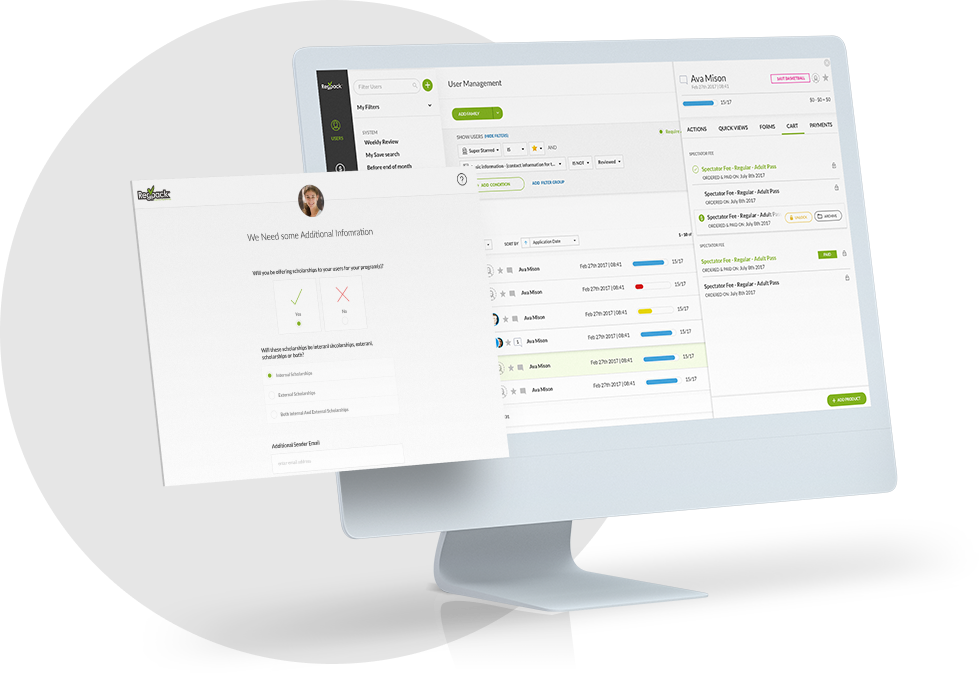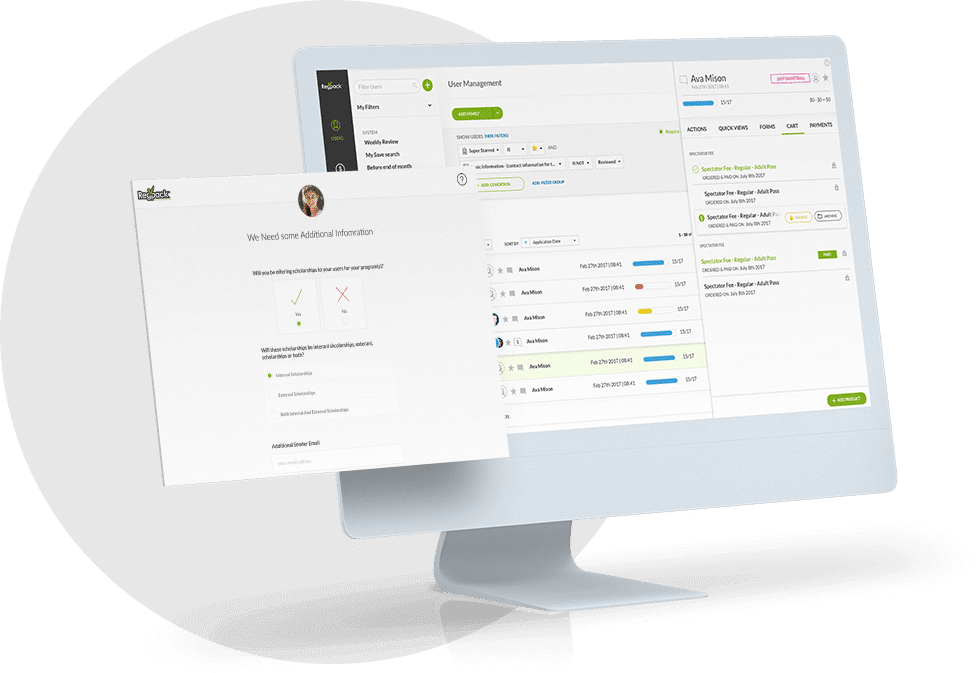The COVID-19 pandemic sparked an online course boom.
Learning institutions had to pivot quickly from in-person to e-learning courses—and with nowhere to go and nothing to do, professional learners around the world turned to the internet for mental stimulation.
Three years later, the e-learning market is worth over $240 billion, and online courses are only getting better.
But many would-be learners still don’t know much about these courses.
Without a sense of what’s offered, how much courses cost, and how to enroll, they’re less likely to take advantage of this valuable resource.
That’s why you need to market your online course strategically. You can’t sit around and wait for your learners to come to you!
In this article, we’ll give you six easy ways to make sure your course catches the attention of those future customers—and get them to sign up.
- Reach Out to Past Students
- Use Testimonials as Social Proof
- Make Teachers the Stars of the Course
- Optimize Your Website for Search Engines
- Promote the Course on Social Media
- Streamline the Registration Process
- Get More Course Signups With the Right Tools
Reach Out to Past Students
The easiest way to find an interested audience is by reaching out to students who have previously taken one of your courses.
This audience is clearly interested in online learning, and it’s probably safe to bet they’ll be interested in topics similar to the course they took previously.
That said, it’s always best to ask customers directly about their interests.
Figure out exactly which courses you should offer (and which of your past students might be interested) by sending out a short survey or creating a quick social media poll.
Ask respondents about their interests, goals, and the problems they experience in their daily life.
Then pitch your course as a solution to their problems and a step toward reaching their goals.
You can even offer them a past-student discount to further incentivize enrollment.
Of course, that strategy depends on you having access to past student data, like their contact information and which course(s) they’ve taken with you before.
You can easily keep track of that with a course management tool like Regpack.
Then you can use its data filtering software, shown below, to generate a list of students who have taken a course with you similar to the one you’re currently offering.
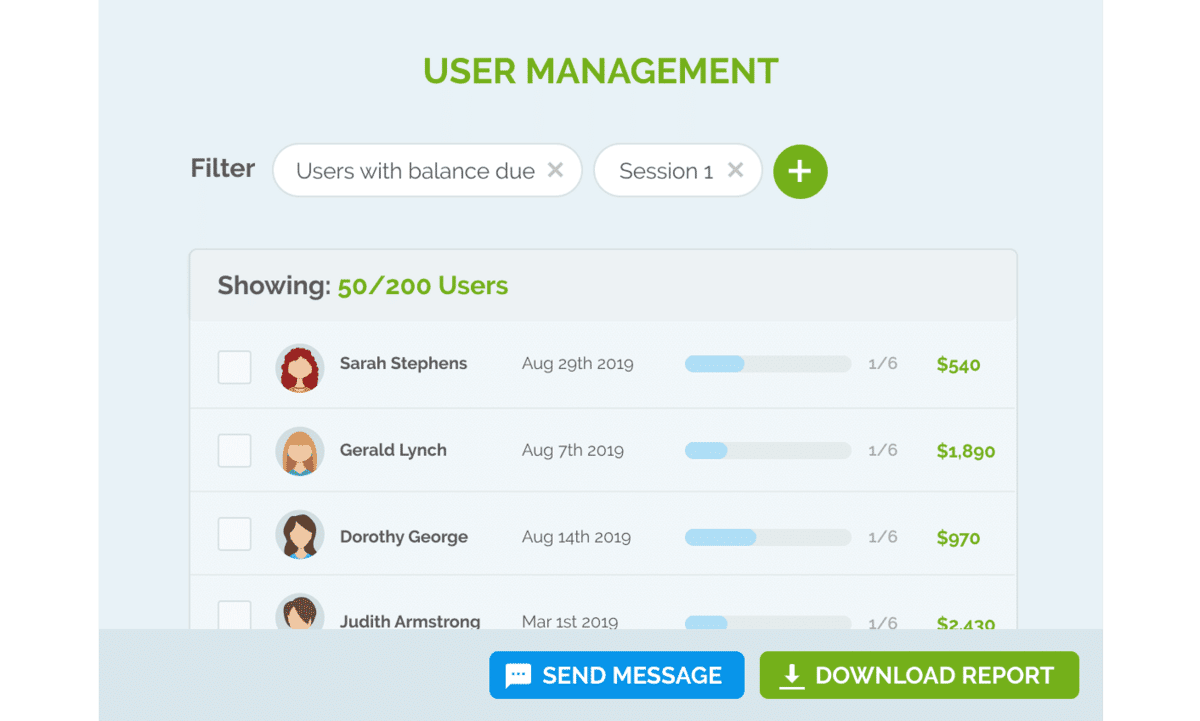
Source: Regpack
Bonus tip: Check out student course reviews before reaching out.
Marketing your course to past students who hated their experience the first time may not be the best use of your resources!
Use Testimonials as Social Proof
Testimonials from past students are one of the most powerful ways to attract prospective students to your course.
Your course outline may sound compelling, but testimonials are concrete, unbiased evidence of its value that will push some customers to actually enroll.
This is where course reviews on third-party websites come in handy.
Viewers know you don’t control which reviews stay up on these sites, so they’ll trust these reviews over content posted on your website.
To get these reviews, you can register your course on review platforms like Google Reviews or Trustpilot and ask students to review courses they’ve completed.
You’ll likely get negative reviews along with positive ones, but responding to these honestly and professionally can actually increase your audience’s trust.
In fact, 45% of customers report being more willing to buy from companies that provide responses to negative reviews.
Another way to generate social proof is by creating case studies.
A case study follows one customer’s experience with your course from beginning to end, highlighting how your product facilitated a positive change in their life.
You can make a case study for your course by asking past students how they’ve used the information they learned.
Did it contribute to an award, win them a promotion, or help them solve a problem?
If so, contact them directly with a few short follow-up questions. It’ll be especially helpful if they’re willing to send you a video of themselves talking about these experiences.
Then put their success story on your blog, on your website, in the featured section of your social media pages, and in emails to prospective students.
Your viewers will put themselves in the student’s shoes and realize that their lives could be similarly enriched by taking your course.
Make Teachers the Stars of the Course
Calling attention to the teacher is another effective way to get more signups for your course.
That’s because most of your customers have experienced both good and bad teachers, and they know how frustrating a bad teacher can be.
Some students will like a teacher so much that they will take many of their courses—even if they wouldn’t be interested in the material otherwise.
Teachers with a following like this can help you advertise your course by posting it on their own websites and social media pages.
If your teacher isn’t well-known, you can still encourage more signups by showcasing the teacher’s style, experience, and achievements.
You could include information about them in ads and emails promoting your course, or you could post clips of their classes on social media like education influencer Melody Jenkins does in the example below.
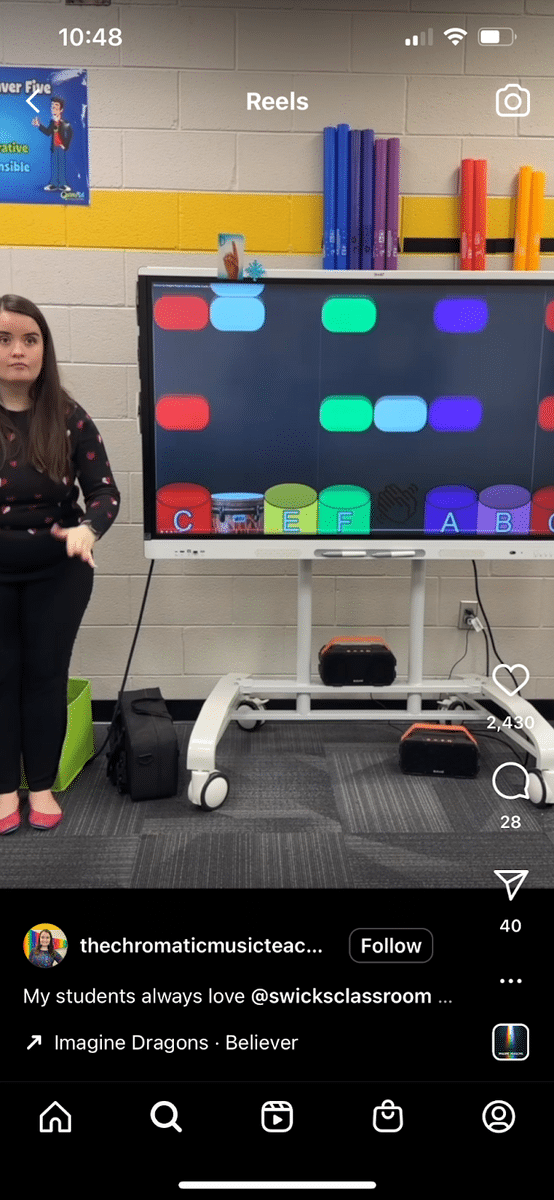
Source: Instagram
In all of your communications, frame the teacher as an expert authority on the subject they’ll be teaching.
Optimize Your Website for Search Engines
It might seem obvious, but one way to drive traffic to your course landing page is by driving traffic to your website in general.
That can be done through on-page and off-page search engine optimization (SEO).
On-Page SEO
On-page SEO refers to the content and structure of your website itself.
The most well-known on-page SEO strategy is to use relevant keywords.
You can drive traffic to the course landing page on your website by including the most commonly-searched keywords or phrases on your course page.
Start by typing a one- or two-word summary of the course topic into Google and looking at the search phrases Google suggests.
These are commonly-searched phrases related to your topic. In other words, they’re what your target audience wants to know!
Make sure these words are on your course page, especially in titles and headings. They should also be in the text descriptions of any videos on the page and in the page’s URL.
Note that it’ll be easier for you to rank for longer phrases (long-tail keywords) than for the more competitive one- or two-word phrases, as demonstrated below.
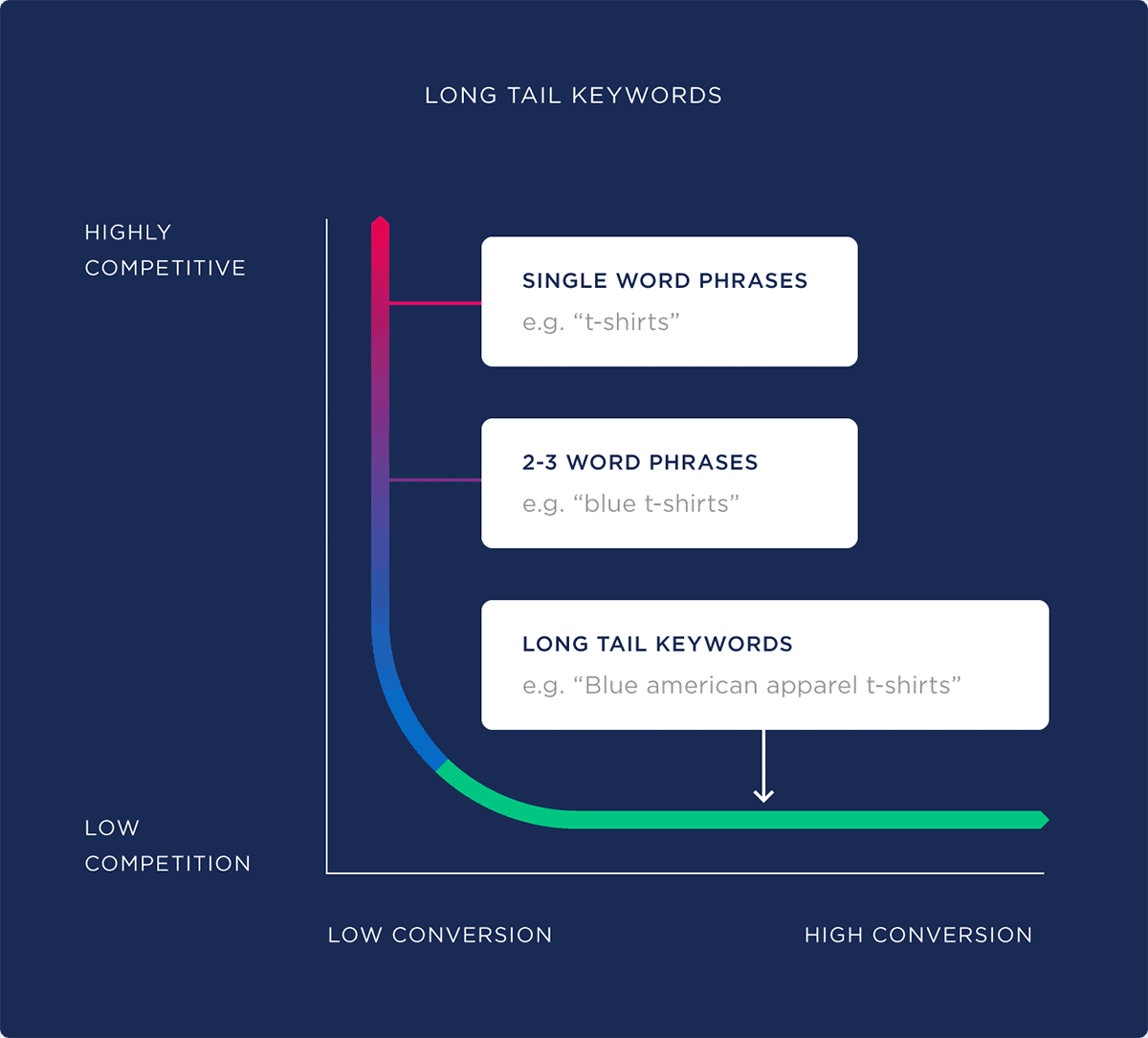
Source: Backlinko
Lastly, remember that producing well-written content is more important than stuffing as many keywords as possible into a page.
Not only does it ensure a better customer experience, but it also factors into search engine algorithms.
Off-Page SEO
Off-page SEO is the promotion of your website on other websites. Two main off-page SEO strategies are relevant to you as an online business:
- Posting high-quality, authoritative content to encourage backlinks (links on other websites to pages on your website) and unlinked mentions of your site
- Promoting your website on your social media
If you provide in-person services in addition to online courses, it’s also a good idea to set up a Google My Business listing and upload it to Google Maps.
That’s how Google knows the business address and other information to display to local customers who search for you.
Both on-page and off-page SEO are crucial for making your business and your courses findable online.
For more marketing strategy tips, check out our article on how to market an online course and raise attendance.
Promote the Course on Social Media
In 2023, it’s safe to say that most U.S. adults have an account on at least one social media site.
As you can see in the graph below, there are over 302 million users across social media sites in the U.S. today—and that number is projected to reach 327 million by 2027.
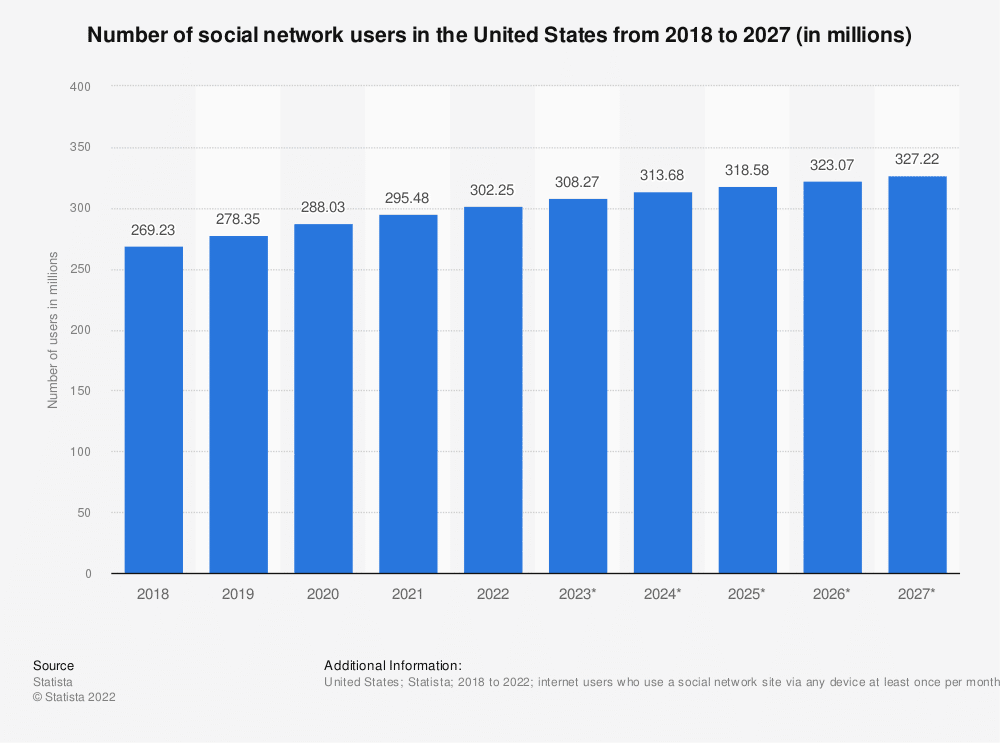
Source: Statista
That’s why it’s so important to promote your course on social media.
But first, you need to do a little research to figure out which sites your target audience prefers.
In general, the following age groups prefer these social media platforms:
- Older learners: Facebook
- Younger learners: TikTok and Instagram
- Professionals and higher education: LinkedIn
- Broad audiences: YouTube, Reddit, and Twitter
You can also buy ads on your target social media sites. You can even control which types of users see the ads—including people who frequently use your target keywords in their posts.
Bonus tip: Join Facebook groups relevant to your course topic or to online courses in general.
Many of these groups allow occasional promotions, where you can advertise your course to an interested audience.
Streamline the Registration Process
Attracting an interested customer to your course page is only half the battle. The other half is getting them to actually register for the course.
Individual Registration
Keep in mind that people are impatient.
The more roadblocks they run into while trying to sign up for your course, the more likely they’ll simply give up and move on—perhaps to a more accessible course with another company.
To prevent that, make sure your course registration form is embedded directly on your website.
Customers tend to be suspicious of third-party websites.
They’ve seen your ads and read your emails, so they trust your website—but they’ll likely feel insecure entering their personal information on another site.
Also, the more links users have to click to access the form, the more likely they are to lose interest.
To avoid registration fatigue, keep your sign-up form short and make sure that the questions are specific to the course they’re signing up for.
You can do that by choosing a trigger-based form that will automatically add or remove questions based on your customer’s responses.
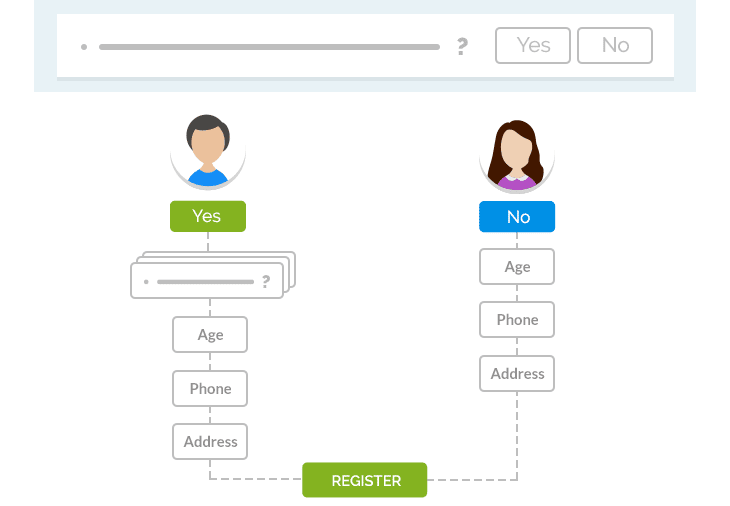
Source: Regpack
As the example above shows, conditional logic ensures that every customer has an experience tailored to their needs.
Group Registration
Another way to maximize customer enrollment is by offering group registration.
In fact, a recent survey showed that courses that offer group registration attract 26% more attendees than courses that do not.
Group enrollment could be helpful for companies registering multiple employees or parents signing up multiple children.
Payment Processing
Once customers have filled out the rest of their information, payment should be quick, straightforward, and secure.
Like registration, it’s important for customers to be able to pay directly on your website. And you should offer multiple payment options (like credit, debit, ACH direct deposit, and PayPal).
Lastly, it’s a good idea to set up registration forms to automatically email the customer with an enrollment confirmation once they submit their payment.
Get More Course Signups With the Right Tools
In today’s competitive e-learning environment, it’s hard to stand out from the competition.
Getting your course in front of the right audience—and then convincing them to actually sign up—takes the right strategies and tools.
Start by reaching out to past students to learn more about what they enjoyed about your course and what they’re interested in learning in the future.
Then, get technical. Optimize your website for on-page and off-page SEO, use social media marketing best practices, and invest in tools that will streamline the registration process.
Regpack’s course registration software, for instance, makes registration a breeze for both you and your students.
Increasing your online course enrollment may seem like hard work, but once you get the ball rolling, momentum will build, and more and more learners will register.
All it takes is a solid foundation of high-quality content and a smart marketing strategy, which you now have.
We hope the tips in this article help you show your audience the true value of the content you provide—one step at a time.









